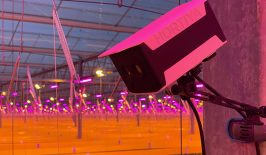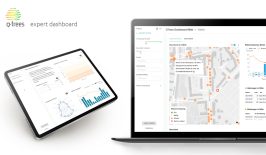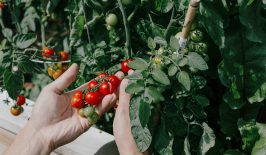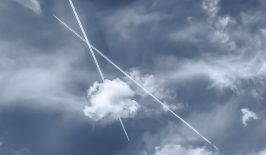As part of a cooperation project with GIZ, Stephan Bohn at the Humboldt Institute for Internet and Society (HIIG) and his colleagues are investigating the extent to which digital tools and platforms have an impact on rainforest protection in Indonesia. We spoke to him to find out more about his work.

Stephan Bohn is a senior researcher at HIIG and project manager in the Innovation, Entrepreneurship & Society department. There he deals with topics of digital organisation, sustainability and open source.
Hi Stephan, what interested you in Indonesia in particular?
On the one hand, Indonesia is an emerging country whose plight became visible, at least partially, through the G20 summit last year in Bali. After all, it is the fourth largest country in the world with around 17,000 islands and about 280 million inhabitants. It is a modern and young country. This is also evident in education; universities are being founded where digitalisation plays a similar role to in Europe. There are a lot of very well-educated young people who work with the same tools we work with and who have similar ideas.
In particular, Indonesia is home to the third largest rainforest in the world, after Brazil and the Congo. The problems here are similar: deforestation and agricultural use by palm oil plantations. One of the big questions is how to reduce dependence on palm oil. There are also many devastating forest fires. In 2015, for example, an area the size of a medium-sized federal state burnt down.
Bringing this situation together with its digital potential is interesting. Tell us more
The topic of rainforest protection and digitalisation is of course not new, but it offers the potential to deal with unresolved issues in an alternative way. For example, drones used to spread seeds in remote regions.
Another part is that various digital platforms collect and collate information about the rainforest. For example, social media posts are used as tools for early detection of fires and other problems.
Such as the early detection of epidemics, for example?
Exactly. You bundle the posts from social media channels, you follow the digital traces we all leave behind, so to speak, to see where problems arise.
But international companies are also involved in rainforest protection, aren’t they?
Yes, we have also worked with companies that use apps and GPS to track products like soy or palm oil and measure how sustainably they are actually produced. Ideally, consumers or companies can also track where a product comes from, for example from a cleared area or from a traditionally cultivated area.
Traceability is enormously important, not least with regard to the new supply chain and transparency laws. And a whole range of start-ups and companies are very active in this area. Here you can see what digitalisation can achieve first; making developments that are not only measurable, but so visible that they cannot be negated by any government or any company. GlobalForestWatch, for example, provides maps and information on forests all over the world. With one click you can see where forests are being destroyed or changed everywhere — not only in the rainforest, but of course also in Europe.
However, making things visible also requires a good database. Where does this data come from?
NASA data, for example, and the data from the European Space Agency (ESA), which regularly updates maps. The satellite data is now so good that you can see individual trees… or not, as the case may be. This is data that is accessible to everyone.
This open access is essential. There are local projects that use this data and bring it together with their own local data, for example on forest fires and forest health. Connecting these two data components requires local actors, open data and digital tools that support this.
Open Data, the free access to data, is a big topic, don’t you think?
Yes, this can also lead to problems if projects use open data but free access to data is later restricted and the tools become useless. Open satellite data is used by many, but data from the field is just as important and not necessarily shared. For this, networking, collaboration and sharing is important.
I think this is important for another reason. With RESET, we look at many projects and start-ups and often see that the same approaches are developed again and again. Is this also an expression of a lack of networking?
Hubs are unfortunately missing everywhere. This is not only the case in Indonesia, but also in Vietnam and other countries. Of course, this requires long-term resources, networking and cooperation.
You have already given some examples. But are there areas where much more happens than in others?
One of the core problems in Indonesia is forest fires, an area where it is easy to do something without causing political offence. To prevent forest fires, there are a variety of ideas for early detection through real-time data and drone monitoring. Peat forests sometimes burn underground. Drones with sensitive measuring devices that can also detect heat and fire underground can help.
Many rainforest conservation projects already use drones to detect fires at an early stage. But it’s not like this is being used across the board. There need to be pilots who control the drones from the ground, there need to be people who can work with the data, and also a fire brigade that can put out fires in remote areas. I would say that this is one of the topics that is most obvious and where there are actually many partners to implement this globally.
Are there other areas in Indonesia where other rainforest conservation projects have been set up?
Essentially, it is really about monitoring. The GIS data is also used for other projects; for modelling, for example, where developments are made visible. When the World Carbon Market comes, it will of course be even more important to measure how much CO2 the various rainforest protection projects actually save. And this visualisation and measurement is also an important financing option for the rainforest projects.
So digital solutions provide more transparency here?
Yes, exactly. You can also hide a lot with digitalisation, but you can also create transparency. For example, we have some partners from the social media sector, i.e. bloggers, journalists and journalists who place their topics on Instagram, Facebook and all the major social media channels. And these are also green topics that appeal to a younger target group. In this way, digitalisation also creates a certain awareness, and you can reach target groups that otherwise know little about rainforest and sustainability issues. In the mainstream media in Indonesia, these topics do not play a big role. Digitalisation therefore creates a different level of public awareness and enables different actors to network.
Here there is also a very critical debate on social media; the topics of “filter bubble”, fake news and social fragmentation. And at the same time, this is also giving rise to very well-networked, international movements, such as Fridays for Future.
Yes, this is an issue in many countries, but social media platforms also offer great advantages. In Indonesia, for example, where rainforest protection is not a big issue politically and in the media, you can of course create your own public through the apps and tools. These are certainly very similar mechanisms to the FakeNews discussion, but the background is different. And that’s why it’s so hard to judge social media. And in countries like Indonesia, you can see that a lot of things can be broken up with it. Without social media, many developments would not be possible, such as worldwide social movements working together on one issue. Fridays for Future is an example of this.
How big do you think the potential of digital technologies is in rainforest conservation?
I see it as one component of many. Of course, fire-fighting projects are of little use if at the same time the forest is being cut down in other areas. That is also a political decision, in particular. But if the rainforest is to be protected more strongly, then digital tools are an important step towards making the problems visible and contributing to the solution. No government in the world can say, no, everything is fine here, when at the same time large parts of the forest are being cut down or cleared. This is simply too obvious through digital maps and data.
ARTIFICIAL INTELLIGENCE – CAN WE SAVE OUR PLANET WITH COMPUTING POWER?
Where are AI applications already being used in environmental and climate protection? What are the particular opportunities, but also the risks, in terms of ecological and social aspects? And what do future AI developments with real added value for the environment and climate look like? You can find the answers here.
This transparency is essential, similar to what happened with the Waldsterben in Germany in the 1980s. It must become visible, perhaps tangible. This forest is so diverse and important for us and it is breathtakingly beautiful. Making it visible is one of the most important potentials. And the other is to really create networking and awareness. If you don’t have a physical hub, at least have a digital one.
But the impact or the actual effect of digital solutions ultimately stands or falls with the political framework in which the whole thing is embedded, doesn’t it?
Correct. There are some basic prerequisites that have to be in place. For example, we need open data, which must also be open in the long term. And the global CO2 market sets the framework conditions, just like supply chain laws. This means that the laws we make here have a direct impact.
Germany and Europe are emitting less and less CO2, while other countries are emitting more and more. But the economic flows work in such a way that many of the products produced in countries like China and Indonesia are exported to Europe. So CO2 continues to be emitted for our way of life, even if it is no longer on our doorstep.











